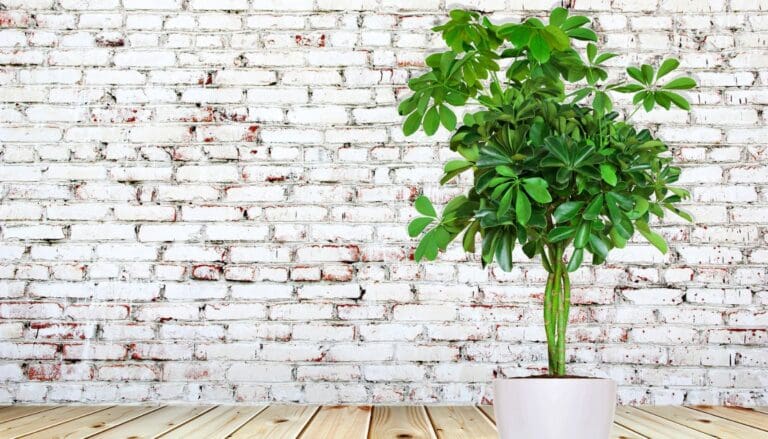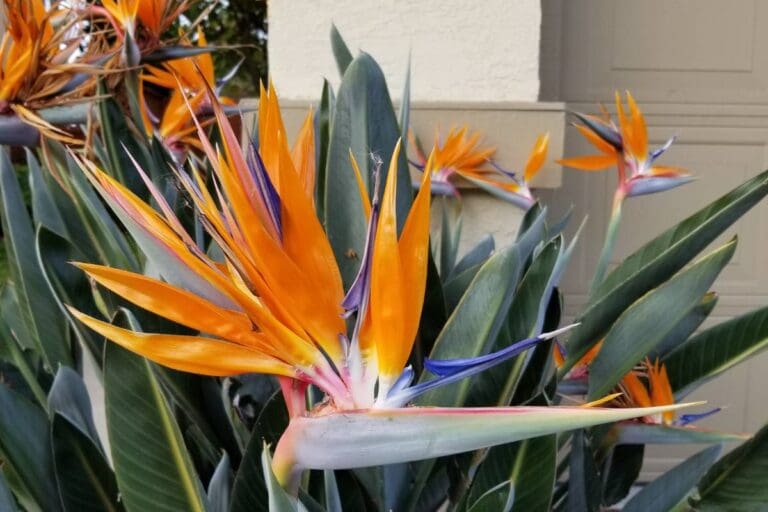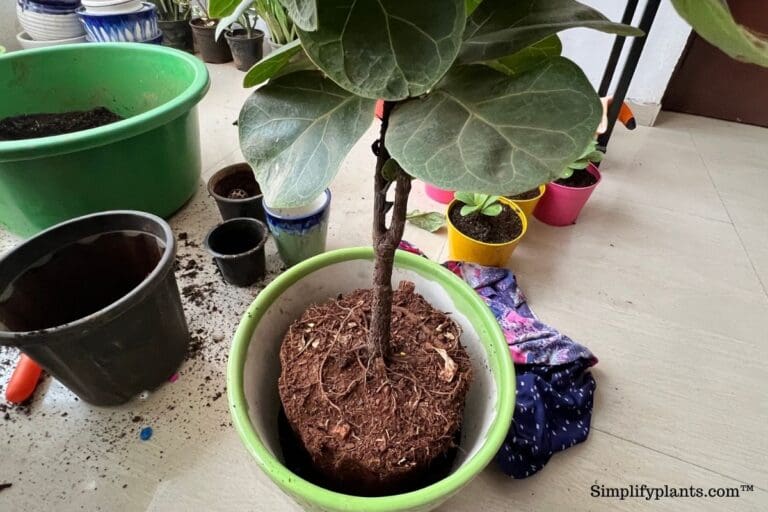Should I Fertilize ZZ Plant? (How Often+Best Fertilizer)
ZZ plants are hardy plants and will thrive in almost all environmental extremities. They are very forgiving and excellent choices for beginners.
However, this makes them ignorant sometimes, which leads to unavoidable problems for the plant.
One of the ignorant factors is fertilizing the plant. But Do ZZ plants need fertilizer? How much? How often? Let’s find out!
ZZ plant needs to be fertilized with a balanced fertilizer every 6-8 weeks during spring and summer. Avoid fertilizing them during the fall and winter months, as they are dormant. Also, make sure to dilute the fertilizer to half the normal strength to prevent a negative impact on your ZZ plant.
There are many ways to fertilize your plant, but the right way for your plant is what you need to know.
Let us learn more about your ZZ plant needs in terms of nutrients and the best food for them.

Please note: Simplify Plants is reader-supported. Some links in the post are affiliate links and I get a commission from purchases made through links in the post.
Do ZZ plants need fertilizer?
Fertilizers are a vitamin dose for boosting your ZZ plant’s health and growth. They have essential nutrients that the soil will lose over time. So, fertilizing your ZZ plant helps the soil replenish the lost nutrient, which the plant will eventually use.
ZZ plants thrive even without fertilizer, but for better growth and development, you might need that extra nutrient dose for them.
The fertilizers contain micronutrients and macronutrients essential for your plant’s growth. Though ZZ plants are very resilient, we still recommend you feed them with fertilizer.
The fertilizer will help in new growth, maintain good health, and fight diseases and other issues. If you completely rely on the soil to provide your ZZ plant with all essential nutrients, the plant may suffer from some issues.
Due to a lack of nutrients in the soil, the plant will have slow growth and lose vigor. Other significant problems that you will find on your plants are:
- Poor growth
- Thin foliage
- Yellow leaves
- Drooping
- Weak roots
If you find any such issue on your ZZ plant, you must check for your fertilizing regime and supplement your plant with proper nutrients.
Also read: Should I fertilize my indoor plant? Why?
What type of fertilizer is good for ZZ plants?

Fertilizing ZZ plants is not difficult, but choosing the right one can be tricky for some people. If you wonder which fertilizer to pick for your ZZ plant, then read further to get all the answers.
But before we go ahead and spill out the exact one we recommend, I would like you to understand what role fertilizers play and how to decide which one to pick. So, let’s dive right into it.
Fertilizer consists of micronutrients and macronutrients, which vary depending on your chosen type.
The macronutrients are nitrogen, phosphorus, and potassium, and to find the same ratio, you need to see the N: P: K ratio on the label. The label shows the ratio of the micronutrients that the fertilizer contains.
The rest is other nutrients in a smaller ratio in the fertilizer. We need a balanced 10:10:10 or 20:20:20 ratio fertilizer for our ZZ plant, which means 30%-60% of the nutrient is a micronutrient, and rest are macronutrients.
Why are these nutrients vital? Let’s find out.
Nitrogen: Nitrogen is essential for protein formation and is required in carrying out numerous plant processes, such as photosynthesis.
A deficiency of nitrogen leads to improper growth, slow growth, and the leaves turn pale green or yellowish due to a lack of chlorophyll. Older leaves fall off as they lack sufficient nitrogen content.
Potassium: Potassium is essential for catalyzing enzymes in the plant necessary for photosynthesis. It is crucial for the vitality and vigor of the plant. It increases root growth and builds cellulose.
The potassium deficiency usually affects the lower leaves in the beginning and then the older leaves. The leaf margins turn yellow and fall out. The root system is not healthy and develops poorly.
Phosphorus: Phosphorus is vital in cell division and tissue production. It also transfers energy from one part to another. It stimulates root development and improves the immune system.
A deficiency of phosphorus is not seen in earlier stages which can be seen as stunted growth in the future.
Any balanced houseplant fertilizer (10:10:10) applied once a month in the growing period is good enough for your ZZ plant.
Liquid kelp or fish emulsion are also good options for feeding your ZZ plant.
Dilute any of your preferred fertilizers to half the strength before applying. Never apply a strong fertilizer(20:20:20) directly on your ZZ plant, as these plants are light feeders.
The best fertilizer for ZZ plant

If you got bored of reading the science behind how fertilizers works or you have skipped right into this part to find the pick, then here you go:
Jacks Classic 20-20-20 All Purpose Fertilizer is the most versatile and widely used fertilizer. Yes, it’s a chemical fertilizer, but it works like a charm for most indoor plants.
Here is how I use this for my ZZ plant: The label on the box reads mixing 1 tsp. Of fertilizer with 1 gallon of water and use the water to feed the plant.
However, I use 1/4th tsp. (25%) of what’s recommended, and my ZZ. Plants do wonder.
If you want to go the compost route, you can either make a DIY compost with kitchen waste using this fantastic compost bin. or you can go ahead and buy a bag of compost. I strongly recommend Charlie’s Compost for your houseplants.
Now, I understand that compost can be trouble for some people as not everyone likes the smell and feel. So you all of you folks out there, Espoma Organic Indoor Liquid Organic Plant Food is an excellent solution.
It is a balanced liquid fertilizer that is completely organic and odorless. You can dilute it to half the standard dosage for your ZZ plants.
I hope this makes the choice of fertilizer easy for your ZZ plant.
But wait, just because you know which fertilizer to choose doesn’t mean you should go ahead and apply it now. There is more to learn about fertilizing your ZZ plant right.
Even if you choose the best fertilizer but fertilize the plant inappropriately, your plant may end up wilting. So, I recommend you read this article until the end to understand how fertilizing works for ZZ plants.
Do ZZ plants like coffee grounds?
Coffee grounds are organic, nutrient-rich, and have proven beneficial for ZZ plants when added correctly. It improves the structure of the soil and makes the soil well-draining.
We understand by now that coffee grounds are beneficial for your ZZ plant, but they can also prove harmful if used incorrectly.
You need to understand the best ways to implement the use of coffee grounds in your ZZ plant.
The prominent mistake planters make is adding coffee directly on the topsoil straight from the coffee pot.
For proper use of coffee grounds, add them to the compost pile, which will create a balanced nutrient-rich element when added to the potting mix.

Composting will also mitigate the adverse effects of coffee grounds by breaking down the effect of caffeine.
The best time to incorporate your prepared compost into the soil is at the time of repotting the plant or propagating fresh cuttings.
Prepare the soil mix for your ZZ plant by adding 1 part of the compost to 3 parts of the soil.
You can add perlite or cactus mix depending upon how dense the finished soil mix is. It will help to lighten up the soil mix which your ZZ plant prefers.
How often should I fertilize my ZZ plant?
ZZ plants are so easy to take care of that even feeding them is minimal.
We all know winter is the season of rest for ZZ plants which means the least care is required.
Plants need sunlight to convert food into energy, and if fed during winter, then due to excess fertilizer, the plant may burn the roots, which will eventually kill the plants.
So you need to fertilize your ZZ plant from spring through summer once every other month. Switch your fertilizing schedule during the spring and fall to match the growth of the plant.
Also, keep in mind that you do not fertilize recently repotted plants for a few months.
To determine the frequency of fertilizers to be applied on your ZZ plant, you must first decide what type of fertilizer you are using for them.
Liquid Fertilizers: Liquid fertilizers are most comfortable to use and provide a steady supply of required nutrients to the plants. They are diluted in water as per the label instructions and applied using a watering container.
Every time you water your plant, it will fertilize it as the water will distribute the nutrients. They are absorbed quickly by the plants and will not burn the plant’s tissues if appropriately applied. Your ZZ plant will not require too much feeding as they are light feeders.
Liquid fertilizers are easy to handle and blend. The nutrients in every drop are uniform. Usually, it is recommended to increase the dosage during the growing period to stimulate growth and suspend the same during the dormant period.
Granular Fertilizers: Granular fertilizers are dry pellets mixed in the soil, most preferred in outdoor planting. They are cheap and more comfortable to store for long durations.
They can be used in indoor planting too but with proper care and instructions. They are high in nitrogen and excellent for new seedings.
After applying granular fertilizer in the soil, water them to activate them. This type of fertilizer can be used once every two months during the growing period for the best results.
Slow-release Fertilizers: Slow-release fertilizers, which by name you may understand, are those which release their nutrients slowly over a while. They are of two types, organic and coated slow-release fertilizers.
Organic slow-release: Persists in the soil for more extended periods and breaks down with time. They might not be available when the plant needs them as they need time to break down. The soil should be moist and warm enough to activate the organic slow-release fertilizers.
Coated slow-release fertilizers: These are mostly in pellet form and release slowly into the soil. They are dependent on the soil moisture and temperature for breaking down, which might take up to 1 year sometimes.
Now that you know the different types of fertilizer and how they work, you can choose one for your ZZ plant. I would strongly recommend going with natural fertilizers or water-soluble ones for the best result.
How much fertilizer does ZZ plant need?

ZZ plant is a light feeder which means you don’t need to keep stressing about the same. But when you are feeding them, make sure the quantity is right.
Too much fertilizer can lead to salt buildup and kill the plant in the long run. Dilute the fertilizer to half the strength as recommended in the package.
If using compost, add 1 part of compost to 3 parts of the soil mix.
You don’t want to fertilize your ZZ plant during winter and autumn. Feed during spring through summer for best results.
If it is granular fertilizer, use half the amount suggested in the package for your ZZ plant.
If it is a liquid fertilizer, mix half the strength as recommended. This way, the plant gets enough nutrients and minerals to boost its growth during its active period.
We should always fertilize our ZZ plant at least twice during the growing season to ensure proper growth.
What happens if you over-fertilize your ZZ plant?
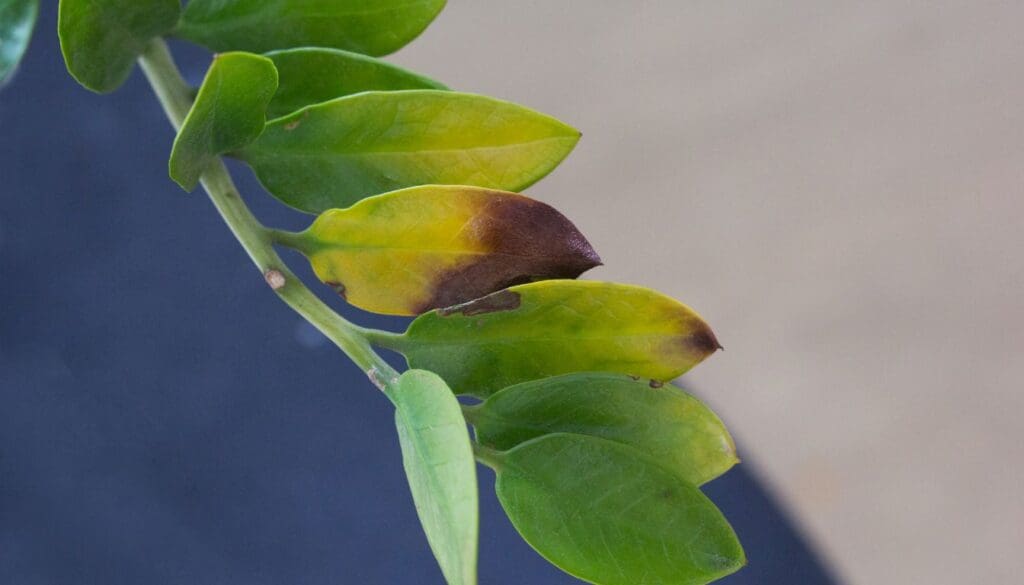
Fertilizing plants means giving them food that every plant needs to grow and stay healthy. But if you overfeed them, they will fall ill.
Your ZZ plants do not want to be overfed, and if put in such a situation repeatedly, they can suffer from many issues. You will see the following signs through which your plan will tell that they have been over-fertilized:
- Discoloring
- Yellow leaves
- Brown foliage
- Burnt roots
- Stunted growth
- Salt buildups
Over-fertilizing will increase the salt concentration in the soil, which kills beneficial soil microorganisms. It makes the plant vulnerable to diseases and affects its root system leading to wilting of your plant.
How to fix an over-fertilized ZZ plant?

Overfertilized ZZ plants mean the entire root system has become weak and will not function properly. We need to put some effort to fix this issue:
- Start by examining the condition of the plant.
- Trim the damaged leaves.
- Scrape the top of the soil to get rid of the concentrated salt that over-fertilization has caused.
- Now soak the soil with a strong stream of water thoroughly. This will flush the excess fertilizer from the soil. Repeat this several times to remove the fertilizer from the soil altogether.
- If the condition is severe, then repot the plant in fresh soil.
Last words
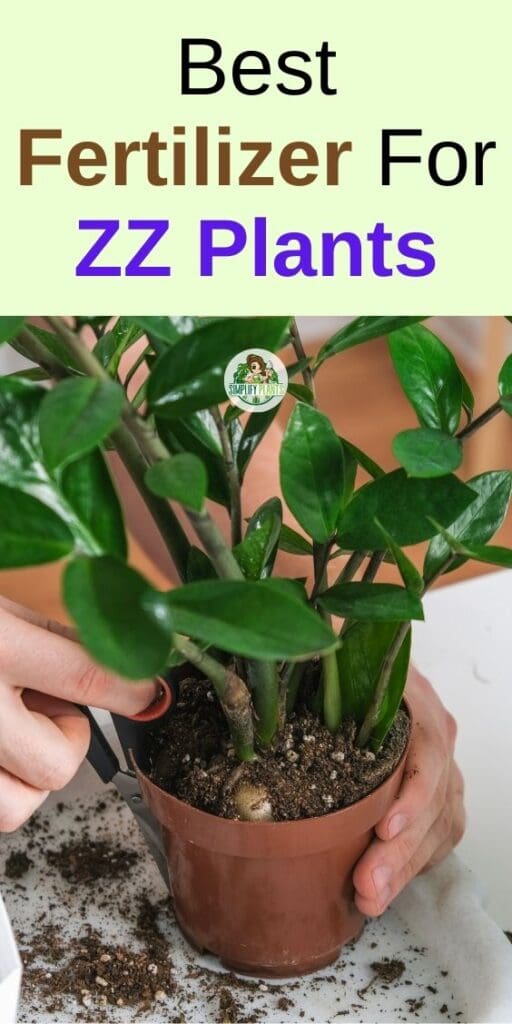
- Fertilizing any plant is easy, but choosing the right one and when to feed should be right.
- There are many aspects of fertilizing ZZ plants that a hobbyist should understand to keep their plants healthy.
- Well-balanced fertilizer is considered to be the best food for your ZZ plant.
- Proper implementation of the fertilizer is as crucial as choosing the right one to benefit from the same.
- Season matters when deciding which fertilizer to use and how much to use.
- Your ZZ plant needs more minerals and less nitrogen, which means they need less fertilizing, and balanced fertilizer works great for them.
Also read: How to revive a dying ZZ plant?
Sources: ZZ plant study, National science foundation.
Recommended Garden Supplies
| Product Image | Our Recommended Gardening Supplies | Check Offers! |
|---|---|---|
Top Top
Top
Top
Top
Top
Top
Top
Top | rePotme Houseplant and Tropical Classic Potting Soil Mix | Check Offer On Amazon |
 Top
Top
Top
Top
Top
Top
Top
Top | Espoma Organic Indoor Plant Food | Check Offer On Amazon |
 Top
Top
Top
Top
Top
Top
Top
Top | GooingTop LED Grow Light 6000K Full Spectrum Clip Plant Growing Lamp | Check Offer On Amazon |
 Top
Top
Top
Top
Top
Top
Top
Top | Soil Moisture Meter | Check Offer On Amazon |
 Top
Top
Top
Top
Top
Top
Top
Top | Govee Hygrometer Thermometer, Bluetooth Enabled! | Check Offer On Amazon |
 Top
Top | LEVOIT Humidifiers for Large Room(Best For Plants) | Check Offer On Amazon |
 Top
Top
Top
Top
Top
Top
Top
Top | Upgraded DIY Automatic Drip Irrigation Kit, 15 Potted Houseplants Support | Check Offer On Amazon |
 Top
Top
Top
Top
Top
Top
Top
Top | Stainless Steel Heavy Duty Gardening Tool Set | Check Offer On Amazon |
 Top
Top
Top
Top
Top
Top
Top
Top | Bonide Insecticidal Soap | Check Offer On Amazon |
 Top
Top
Top
Top
Top
Top
Top
Top | Bonide 32 oz Spray Neem Oil for Organic Gardening | Check Offer On Amazon |
 Top
Top
Top
Top
Top
Top
Top
Top | Garden Safe Fungicide | Check Offer On Amazon |


